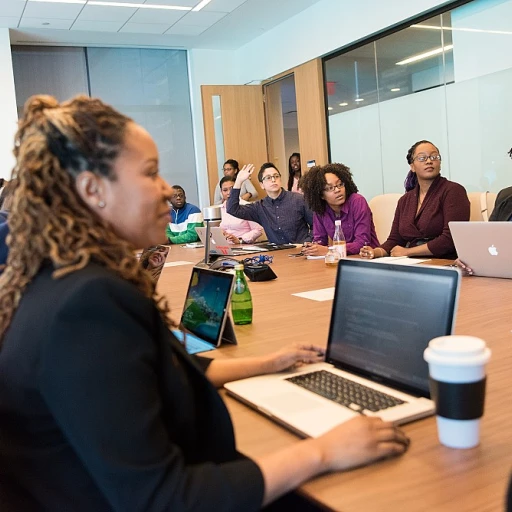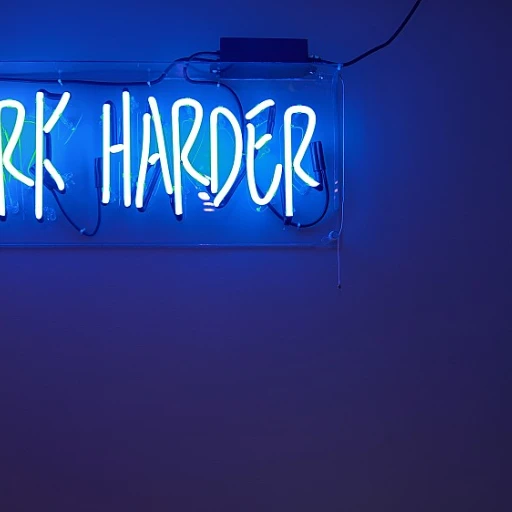
Understanding the Role of a Chief Human Resources Officer
Defining the Strategic Role
The role of a Chief Human Resources Officer (CHRO) has evolved significantly, becoming a cornerstone in shaping a company's strategic direction. As businesses navigate a dynamic market landscape, the CHRO's responsibilities extend beyond traditional HR functions. They are pivotal in aligning human resources strategies with overarching business objectives, ensuring that the company's workforce is prepared to meet future challenges.
Key Responsibilities and Impact
CHROs are tasked with a broad range of responsibilities that include service management, talent acquisition, and employee development. Their role is integral to enhancing customer experience and satisfaction by fostering a resilient HR team that can adapt to changing customer expectations and market demands. This involves leveraging service strategies that not only improve internal processes but also enhance the company's external service offerings.
Aligning HR with Business Goals
A successful CHRO must possess a deep understanding of both the company's goals and the market dynamics. They play a critical role in developing service strategies that align with the marketing mix and product service offerings, ensuring that HR initiatives support the company's long-term success. This alignment is crucial for maintaining a competitive edge in the market and achieving sustained growth.
Driving Innovation and Change
In today's fast-paced business environment, CHROs must be proactive in embracing change and innovation. This includes adopting new technologies to improve service delivery and enhance customer support. By fostering a culture of continuous learning and development within the HR team, CHROs can drive innovation and ensure that the company remains agile and responsive to market changes.
Strategy 1: Building a Resilient HR Team
Creating a Strong Foundation for HR Services
Building a resilient HR team is crucial for any organization aiming to enhance its HR services and achieve business objectives. A skilled and dedicated HR team acts as the cornerstone of effective service strategy and service delivery. Here's how to build such a team:- Diverse Skill Sets: Ensure your HR team possesses a mix of skills that cover customer service, management, and marketing. This diversity enhances their ability to meet customer expectations and improve service quality.
- Team Collaboration: Promote a culture of collaboration within your HR team. By working together, team members can share insights into the marketing mix, boost service offerings, and align with the company’s long-term goals.
- Continuous Learning and Development: Encourage continuous learning to keep the team updated with the latest trends in service marketing, service management, and customer experience. This can significantly improve customer satisfaction.
- Effective Communication: Developing interpersonal communication skills within the team is key to understanding customer needs and enhancing service delivery. Listen to customers' feedback actively and use it to refine product services strategies.
- Leverage Technology: Implement digital tools and social media platforms that enhance customer support and service quality. This technological integration helps save time and boosts team efficiency.
Strategy 2: Leveraging Technology for HR Services
Integrating Learning as a Pillar for Advancement
In the ever-evolving business landscape, leveraging technology to enhance HR services is not just a trend but a necessity for achieving service excellence. The scope of leveraging technology encompasses various domains of a CHRO’s responsibility, including service quality, customer satisfaction, and overall business objectives. The adoption of this strategy demands an understanding of customer expectations and the flexibility to meet them head-on. The integration of digital tools, such as service management platforms and customer engagement software, plays a pivotal role. These platforms allow for the streamlining of service delivery, enhancing both customer experience and internal efficiency. A well-deployed digital strategy can transform the service team from a support function into a key player in achieving market success. One cannot overlook the importance of aligning technology with business goals to improve service offerings. This alignment includes fostering a marketing mix that incorporates digital service strategies together with traditional methods. Technology also opens avenues for refining products services through service marketing and social media engagement, ensuring customers receive optimal experiences every time they interact with the company. Furthermore, it's essential for HR to measure service success. Metrics such as customer satisfaction and service delivery time provide insights into the effectiveness of service strategies. Regular assessments help in refining these strategies to stay ahead in the competitive market environment. Given the long-term potential of technology within HR, companies must remain committed to keeping updated with tech advancements and be ready to implement changes that uphold customer satisfaction. For those eager to understand deeper nuances of integrating technology in HR and *embracing the uniqueness in human resources leadership*, consider exploring this comprehensive guide.Strategy 3: Developing a Culture of Continuous Learning
Cultivating an Environment for Engagement and Retention
A Chief Human Resources Officer (CHRO) must go beyond traditional HR roles to create a workforce that is engaged, motivated, and committed to the company. By focusing on employee engagement and retention, a CHRO can significantly impact the overall growth and success of a business. Engagement and retention strategies are crucial in enhancing the employee experience. It is essential to understand customer expectations within the workforce to tailor services that meet their specific needs. A service strategy focused on employee satisfaction and engagement ensures long-term business objectives are met, promoting a harmonious work culture. Building a strong engagement strategy involves several steps:- Active Listening and Feedback Channels: Implement regular feedback mechanisms such as surveys or suggestion boxes to gauge employee satisfaction. This helps in understanding customer, or employee, expectations and addressing any concerns.
- Personalized Development Opportunities: Providing opportunities for growth aligns with the business goals of fostering a talent pool. Offering tailored professional growth paths can enhance both customer satisfaction and loyalty internally, leading to higher retention.
- Recognition Programs: Establishing recognition programs boosts morale and demonstrates that the company values contributions. This reflects well on product services, improving overall customer satisfaction internally.
- Work-Life Balance Initiatives: Encouraging a balance between professional and personal life contributes to a positive employee experience. Organizations that promote work-life balance tend to retain skilled employees over the long term.












